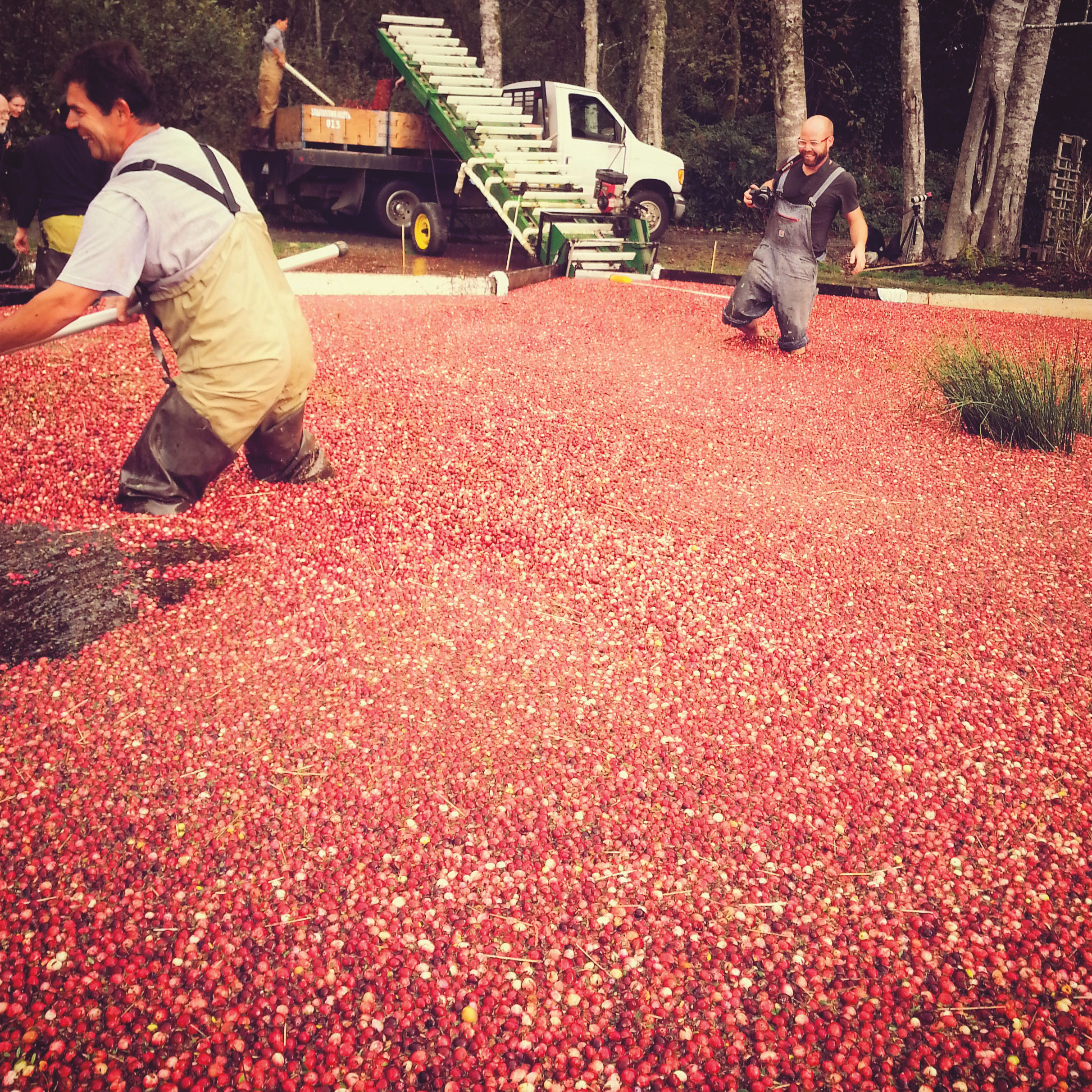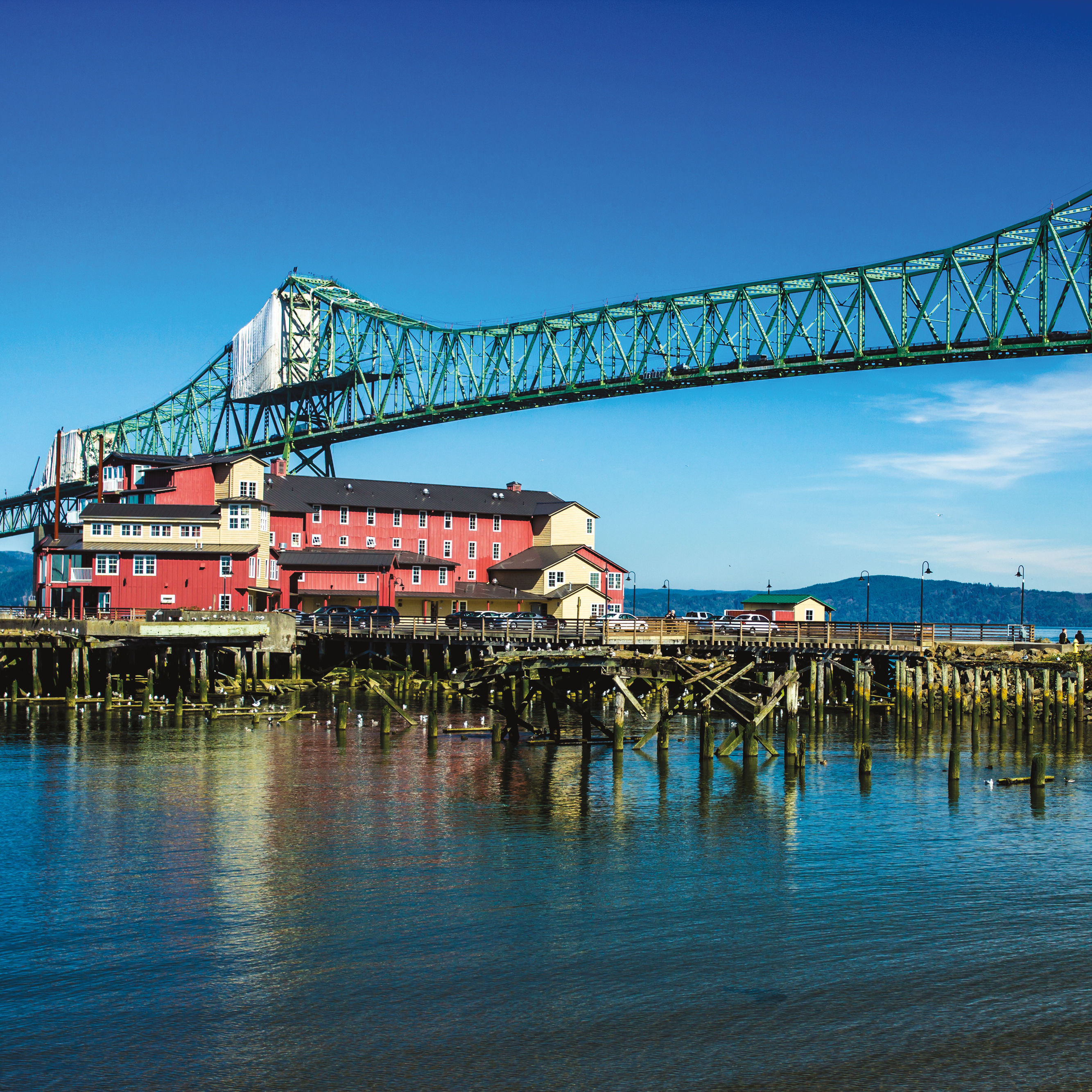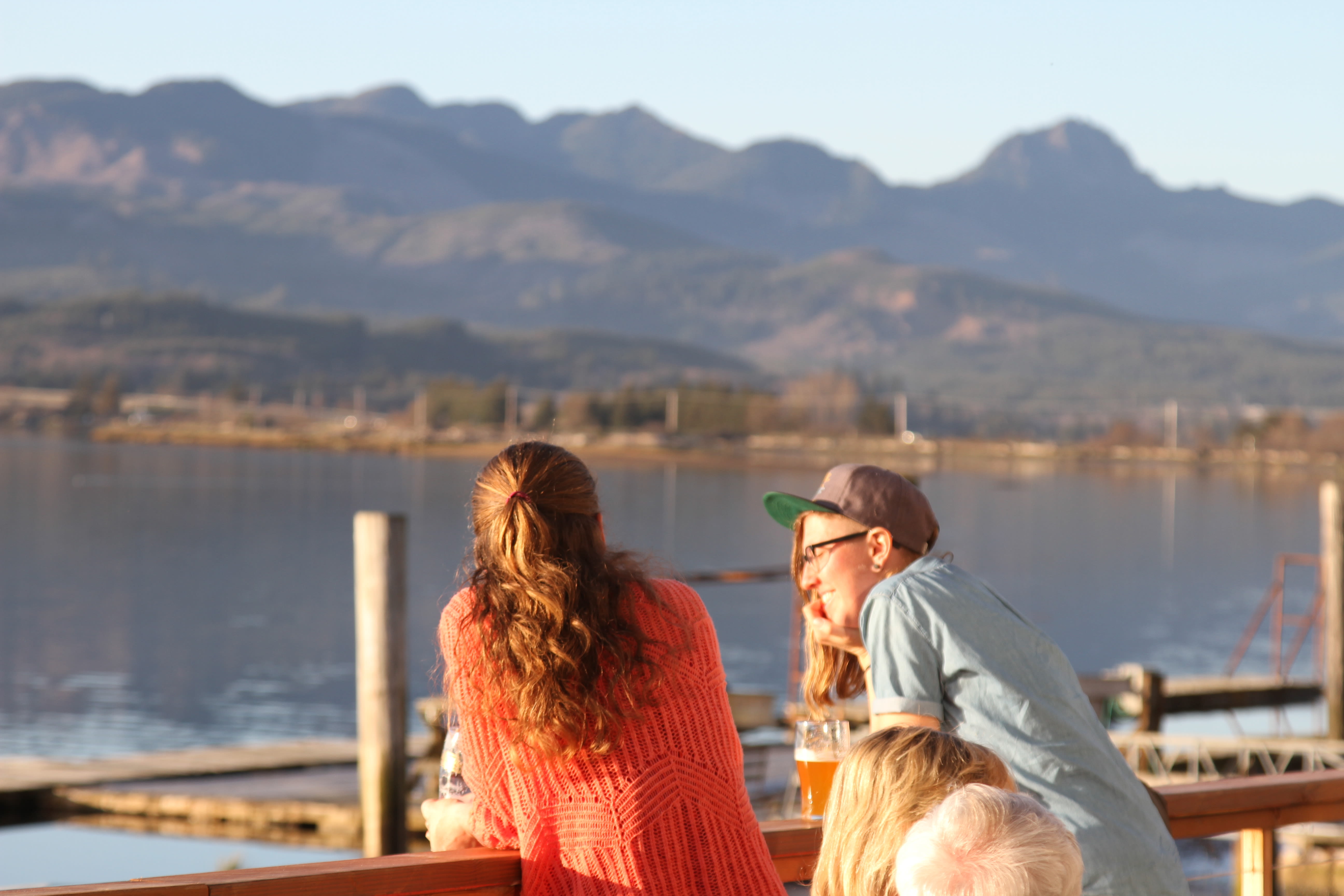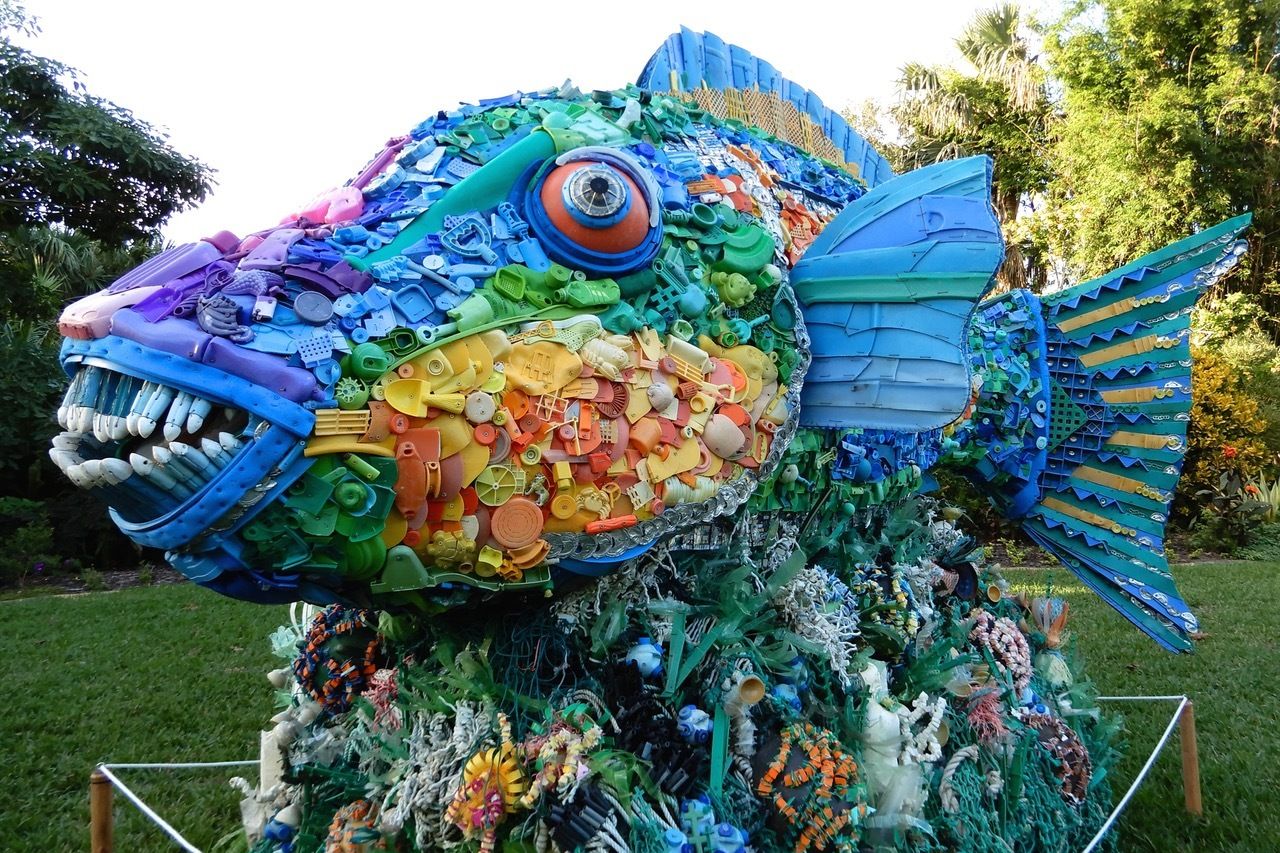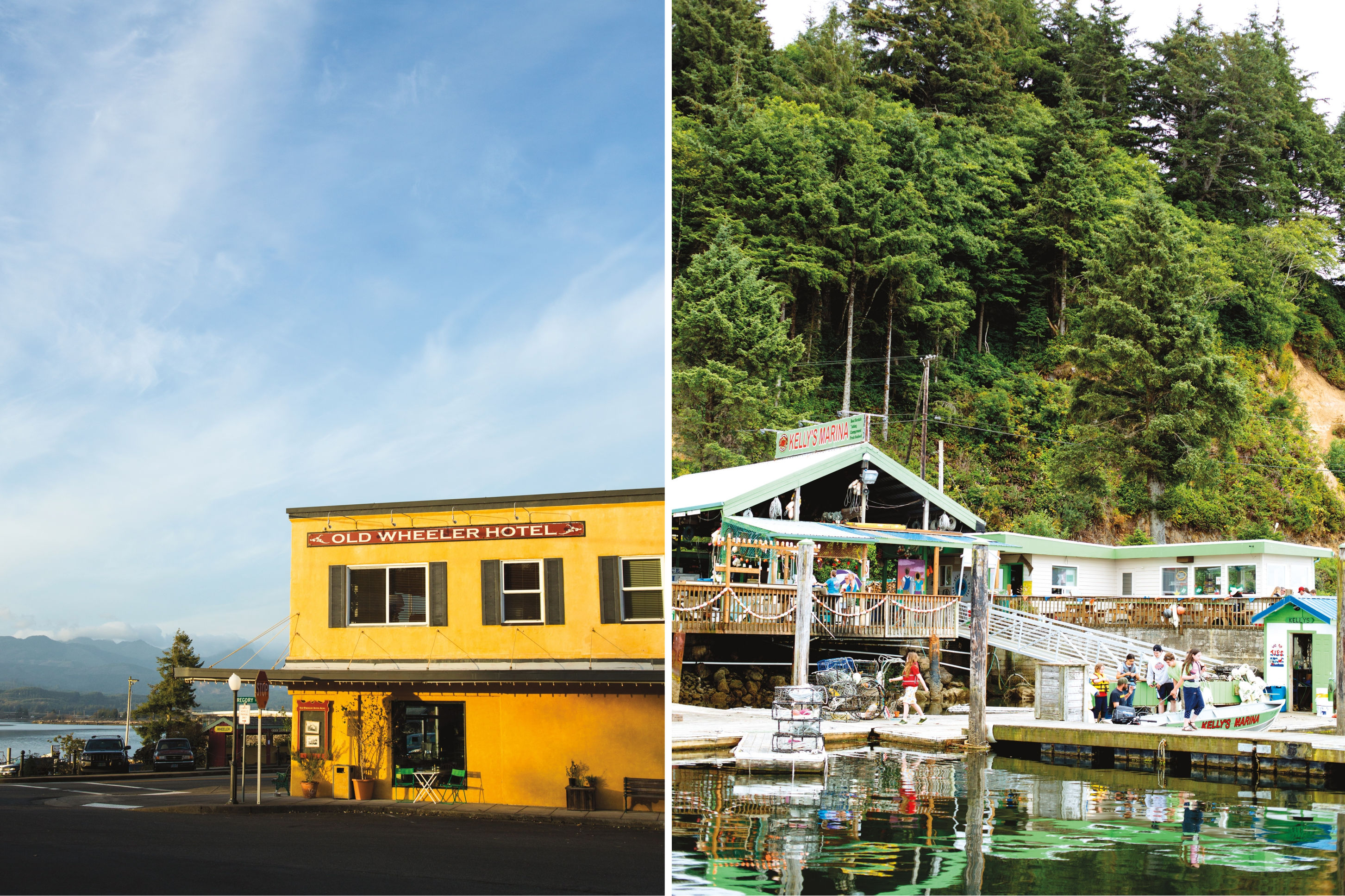
Can Oregon's North Coast Switch Up Its Tourism Game?
All summer long in downtown Astoria, day-trippers throng new bistros, breweries, and high-end bakeries. Lately, there are more Portlanders than usual, and some of them are staying—driving real estate prices up, along with some grumbling about ... wait for it ... gentrification. Some 20 miles farther south, the main drags of Cannon Beach and Seaside are cute, quaintly weathered, and also utterly discovered. Even tiny Manzanita, another 14 miles south of Cannon Beach, now feels like an open secret.
That’s mostly good news for a stretch of Oregon’s North Coast that sorely needs tourist dollars. Like most of its neighboring communities, Astoria’s fishing industry took a huge hit decades ago; these days, there are signs of economic recovery, as the effects of booming Portland ripple west. Witness the nervous fair-weather cyclists clinging to the shoulder of Highway 101, the crowds at new coastal breweries lining up for session ales and selfies, the young families (stocking up for the Big One?) single-handedly cornering the saltwater taffy market.
But there’s a turn-off date for that tap—it’s right about when the rains start. That’s when seaside eateries switch to winter hours. When boutiques shutter for the season. When hotels from Long Beach to Lincoln City offer screaming deals to lure a trickle of winter storm chasers and solitude seekers.
Yes, August on the North Coast makes for a splendid getaway. What you don’t know—but soon will, if certain nascent tourism agencies have their way—is that this whole stretch of shore might be even sweeter as the crowds recede. In October, say, or even April.
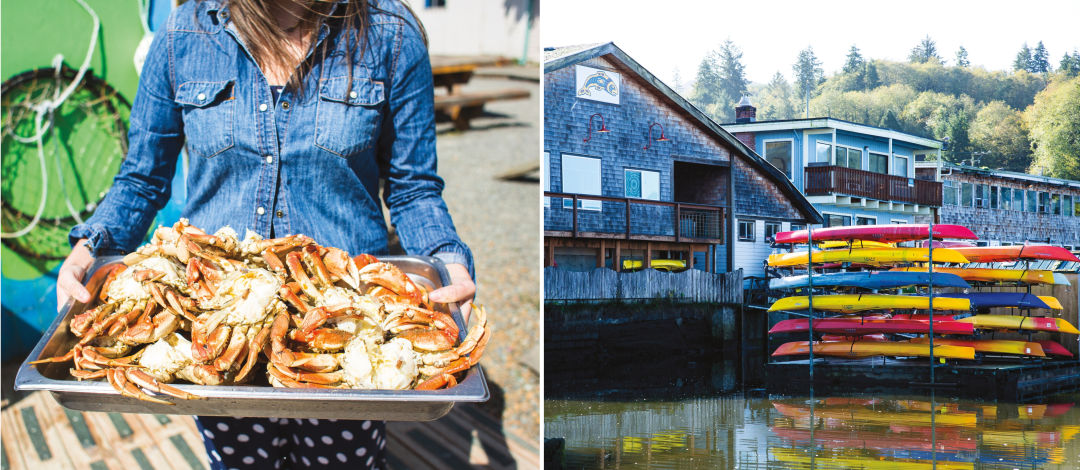
From left: Dungeness crab at Kelly’s Marina; rental kayaks in Wheeler, perfect for tooling around Nehalem Bay
Image: Justin Bailie
Which brings us to the sleepy rail town of Wheeler. Tucked into an estuarial bend in the shadow of Neahkahnie Mountain, Wheeler—population maybe 400—has long felt like a hamlet resigned to marginal North Coast status: lacking an oceanfront view, equally distant from the two closest Portland-to-coast arterials, its eye-blink of a main street long absent its former mills and fish-packing plants. Odd, then, that this area is experiencing its own form of first-wave gentrification, attracting artists, foodies, farmers, and crafty entrepreneurs for a life that feels, to use the words of Chantelle Hylton, “more intentional.”
Hylton, back in the early aughts, was the epitome of Portland cool, booking bands at Portland’s then-extant Blackbird music club. But a year ago, Hylton and her partner, artist Patrick Rock, gave up city life and moved here, to Wheeler; this past March, they opened the Salmonberry Saloon in a rough-shingled, bay-facing space most recently home to the Tsunami Grill. Like its dive-y predecessor, the Salmonberry makes the most of its stunning waterfront views. Unlike the Tsunami, the Salmonberry’s menu proudly touts a cornucopia of high-end North Coast foodstuffs, from Nestucca Bay Creamery cheeses to seafood from Nevør Shellfish and Jeff Wong’s Garibaldi-based CS Fishery.
It might look like hubris, such hyperlocal ambition in the heart of these trucked-in chowderlands. But when former Portland cook Mike Aldridge (Headwaters, Urban Farmer) serves wild CSF halibut slathered in romesco and edible flowers from Manzanita’s Bird Song Bouquets, it’s actually in service of something even bigger happening here: a community-wide effort to rebrand the coast as a hotbed of cottage industries.
“I can feel it start to happen,” Hylton says. “More purveyors are getting their groove on. All along the North Coast, it’s like a collective excitement.”
As of this summer, you can follow that excitement, literally, on the North Coast Food Trail—a self-guided tour stretching from Cannon Beach to Lincoln City that connects some 60 farm stands, creameries, foragers, fish purveyors, and wineries. All eateries called out in the trail locally source at least 25 percent of menu ingredients. (The Salmonberry, naturally, makes the cut.) According to Nan Devlin, Tillamook County’s tourism director, the trail might be the start of a larger push led by Travel Oregon—one that rebrands the whole of the Oregon coast as a year-round gourmet destination. (Says Devlin: “We’ve been told that we’re being used as the model for the other food trails.”)
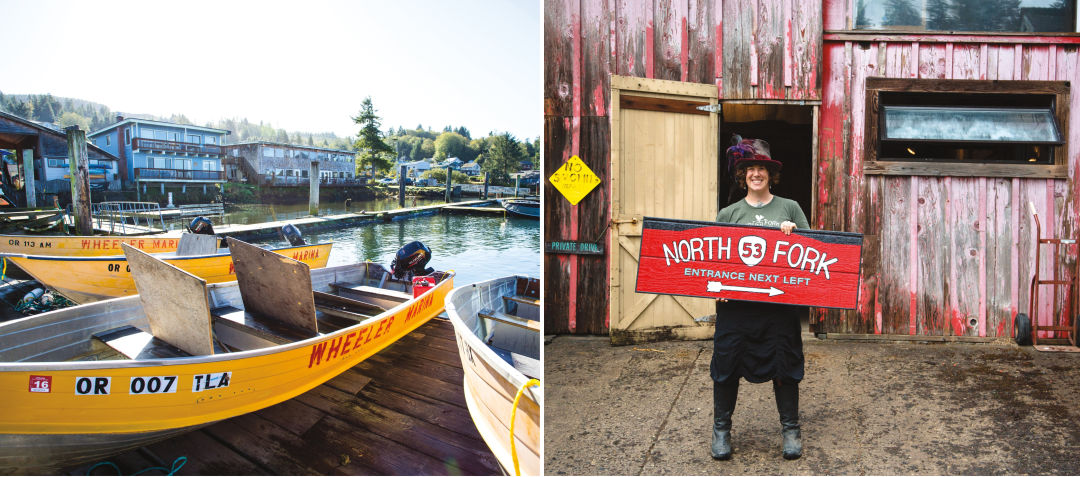
From left: Wheeler Marina; Ginger Edwards of North Fork 53
Image: Justin Bailie
The idea is that by aggressively focusing on a message that sells a whole stretch of coast (rather than individual towns or attractions), a single tourism campaign will float all boats—if enough partners grab paddles. So far, evidence of this mutual admiration society is everywhere. Take Ginger and Brigham Edwards’s North Fork 53 retreat, where there are plans for an on-site food cart selling pastries from Seaside’s Dough Dough Bakery. Or that hamburger at the Salmonberry Saloon, made with Nehalem River Ranch’s lean, grass-fed beef. Or south a bit at Kelly’s Brighton Marina, where coolers offer cold, local Pelican ales to wash down a day’s Dungeness crab haul.
What’s next for Wheeler, and beyond? Convincing inlanders such bounty can be found year-round. Devlin says September 29’s first Crave the Coast festival in Garibaldi is just the start; throughout fall and winter, North Coast Food Trail partners plan to host a series of farm- and dock-to-table dinners (perhaps even one served onboard an Oregon Scenic Railroad train). The Newport-based Oregon Coast Visitors Association, meanwhile, is toying with yet another lofty concept: a 363-mile-long public art trail hugging Highway 101—set to launch this winter with hopes of drawing more tourists to coastal galleries and boutiques.
“To me, what’s really great is that we didn’t have to invent anything,” Devlin says of the food trail campaign. “It was all already here. It just needed a bit of shine and storytelling.”
Devlin is seeing the fruits of cobranding in a reported uptick of visitors from trail partners. The real test, for her and others, is whether savvy messaging will be enough to draw tourists during the North Coast’s soggy season—that span from the last autumn huckleberries through spring’s first haul of fresh pink shrimp. Knowing Portlanders, success might boil down to how much tourists like the answer to one question: what, exactly, will the North Coast dish up next?
Pictured at top: The Old Wheeler Hotel, Kelly's Brighton Marina (photos by Justin Bailie)
